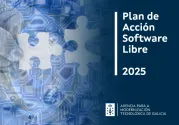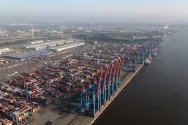
Jump to:
FAQ
Local administrations can reap the same benefits from open source as any other organisation: vendor independence, transparency, security and cost efficiency. However, there are advantages to open source which are of particular interest to cities and regions.
Open source can foster collaboration between regions that can expand from software creation to other areas of operations. Joint development can lead to re-use of existing solutions, information sharing between experts, and interoperability of software systems, resulting in other concrete initiatives and collaboration for innovation and addressing mutual challenges. This collaboration is not limited by national borders but can help cities to network with their international peers.
As public administration projects can be large and solutions long term, open source development can feed into stimulating the local economy. Instead of using centralised services from proprietary software vendors, the local public offices can use regional businesses, creating jobs and building capabilities for innovation.
Numerous cities have championed successful open-source software solutions and projects. For example, the Decidim open source participatory democracy platform was established in 2016 by the city of Barcelona. Since then, the platform meant for citizens to create proposals, vote, and engage in public discussions, has spread across other Spanish cities and globally—all the way to Japan.
eVaka, launched in Espoo, Finland, in 2018, is an open source early education management system designed to streamline the city’s daycare processes. This platform has greatly improved the efficiency of daycare administration, benefiting both the local government and families. eVaka’s scalable and adaptable nature has inspired its adoption in various other municipalities in Finland.
The Ministry of Finance of the Czech Republic developed Cityvizor in collaboration with municipalities in 2016, providing fiscal transparency in public administration. Its effective implementation has led to a surge in transparency standards in numerous Czech cities, encouraging better governance, increasing citizen engagement, and thereby promoting public trust in local authorities.
These are just a few examples among many. To discover more, explore our news section and case studies. If you know of a project that should be made known at OSOR, write to us at EU-OSOR@ec.europa.eu.
Open source software can significantly foster collaboration and knowledge sharing between cities and regions in many ways:
Standardisation: Open source software provides a universal platform that everyone can access and contribute to, which can increase interoperability and consistency across cities and regions. It allows municipalities to collaborate and share information more efficiently.
Shared Resources and Costs: Through open source software, cities and regions can share the costs of developing, maintaining, and improving software. The more cities that cooperate, the lower the cost per city. Other cities can also use the software without contributing. This has no negative impact, and may even be positive because using the same software facilitates interoperability.
Collective Problem Solving: Open source software encourages collective problem-solving by bringing together a wide array of perspectives and expertise. Cities or regions facing similar issues can work together to find effective solutions, improving their processes and systems collaboratively.
Knowledge Sharing: Open source software inherently promotes knowledge sharing as codebases and methodologies are freely available for everyone to learn from. This allows cities and regions to learn from each other’s successes and failures, leading to continuous improvement and innovation.
Training and Skills Development: Working on open source projects can provide opportunities for skills development, for lowering barriers of entry to active participation in digital technologies, as well as a way to attract top talent. This can help cities and regions to build a pool of skilled professionals, which can be beneficial for local economic development.
Networking and Community Building: Open source software projects often bring groups of people together, fostering networking and community building. This can lead to collaborations and partnerships that go beyond the software project itself.
By adopting an open source approach, cities and regions can learn from each other, share resources, and collectively develop solutions that work for their specific contexts.
Often cities and regions have particular needs for their IT-systems dependent on the regional context, national legislation, local capacities and other characteristics. Software solutions should align with their strategic objectives. When planning software procurement, a procurement unit should study the existing open source products, evaluating their features against the municipality’s needs. Factors to consider include openness, usage extent, maturity, community size, licensing model, and availability of required skills.
As part of their assessment, the regional offices should look at the plans and experiences of other municipalities with similar needs. One option is to strive for joint procurement among municipalities and agree on cost-sharing. Collaboration can leverage diverse expertise found within municipalities.
If there is no suitable solution available, before jumping into the development of new software, regions should evaluate if the market for the tool is wide enough for a new tool to emerge in a reasonable timeframe, as well as the available resources for long-term development.
When evaluating the existing tools, the cities and regions should consider the following factors:
Functionality and Fit: It is essential to ensure the software is designed for the purpose and can handle the intended workload. If the software does not fill all the requirements, but is close, open source gives an opportunity to modify the software. In those cases, contributing to the project can be an excellent option. Forking is also an option.
User Friendliness: A good user interface will reduce resist ance to change and will increase efficiency. With open source software, if the features are good but the user interface is inadequate, or if the interface is too different to what the users expect, this can be modified.
Support and Documentation: With proprietary software, often the software owner is the only place to get support. Open source software places no legal or technical restrictions, so there may be a choice of service providers, or any software developer can be hired to study the software and perform audits or implement improvements. It’s worth looking around for the options available. There may also be a community of users and developers. This can be a source of information, and a way to find service providers.
Security: With access to the source code and permission to audit and modify, open source software offers more options for implementing security procedures and standards. Protecting the citizens’ privacy is fundamental for e-governance, so it’s worth looking into these additional possibilities for rigorous security testing, and that there's an active community’s work on identifying and patching vulnerabilities. Increased transparency makes it possible to look at how frequently there are releases and how security issues are dealt with.
Scalability and Adaptability: Open source software is highly scalable and adaptable. It allows cities and regions to take a piece of software and adapt it to their specific needs. Moreover, as conditions change over time, communities can continue to modify the software to better meet their evolving needs.
Compatibility: It is essential to ensure that the software is compatible with other systems that the city or region uses, but also with national level services and other municipalities. Open source software can be modified to be compatible with other systems, which reduces vendor lock-in and makes it easier to switch or adapt solutions.
Costs: With open source software, there are more options for how to invest in your IT infrastructure. Costs can be shared by collaborating with other local governments via joint initiative on development and maintenance. This is optional and may require a type of collaboration that could be new to an organisation, but the option exists and can provide benefits for total price and for software interoperability.
Licences: Licence considerations for the use of open source software are very simple. There are no per-seat or per-user limits. Copies can be made, installed and used without limits, so there’s no requirement to maintain documentation about how many licences or copies of the software are in use. Internal development also does not trigger licence requirements. Distributing the software can incur some requirements for how this is done (e.g. preserving copyright notices, making the source code available), and distributing modified versions may also trigger certain requirements.
Open source software can play a significant role in promoting transparency and citizen engagement in cities and regions in several ways:
Code Review and Audit: Open source software allows anyone to review and audit the source code. Citizens and experts can analyse the code, identify potential vulnerabilities, and propose improvements, ensuring greater accountability and trust. Access to source code makes it possible to examine the logic driving the services and decision-making impacting the citizens’ everyday life.
Visibility of assets: Citizens can directly see where their tax money is going.
Collaborative Development: Open source software encourages collaboration among developers and stakeholders. In addition to the technical role which is available to software engineers, the user community can also be involved in providing input and feedback on the development of the services through which they will interact with their local government. This increases accountability and trust.
Customisation and Localisation: Open source software provides the flexibility for local governments to customise and adapt it to their specific needs. This can include translation to relevant languages, modification of the interface to match other software in use or to match the previous software people were using.
Guideline for Public administrations on Procurement and Open Source Software is an overview of the EU and national political and legal background of the public procurement of OSS, as well as good practices for each step of the procurement process. The update for this document is coming soon!
The Guidelines for Sustainable Open Source Communities in the Public Sector provide you with step-by-step solutions and best practices to foster the sustainability and success of open source projects in the public sector. In 2021, OSOR expanded the guidelines with additional examples of useful tools and good practices.
Country-specific guidelines. Numerous organisations within Member States have released comprehensive guides tailored to assist their public administrators. For instance, Danish Agency of Digitalisation, Association of Finnish Municipalities and Agency for Digital Italy each offer their own specialised documents, providing expert guidance on implementing open source software. Included in this list, you’ll discover more resources and organisations that can offer additional information tailored to your country’s or city’s needs.
Open Source Program Offices (OSPO). National and local OSPOs can offer support and directions on the OSS procurement and implementation process.
If a local government has been using proprietary software, where source code is not available to users and there is no public community, they may not be aware of the benefits which become available when you understand the open source development community. Many development communities host their discussions in public forums, and many have policies that every change to the code must come with a brief explanation. There is thus a rich source of information about the current and future plans for the software. Open source communities can also offer support in finding existing solutions.
Contributing to the community can also bring benefits. Contributors help decide the direction the software will move in, they develop a deep understanding of the software which can be useful for audits, and by contributing source code to the main project they can be sure that their features will be kept in consideration during future development of the software.
Through interaction with open source communities, it’s also possible that the community sees an increased interest in supporting the local government, thus encouraging the use of their software. It’s also possible that the open source community would be interested in getting input and feedback from users. Public administrations can facilitate this interaction.
One simple way to build a relationship with the development community is by contributing code back to the main project. This can be bug fixes, documentation, security improvements, or new features or modules. These should be under the same open source licence as the existing software. Each software project has its own conventions, so it is a good idea to look at the conventions used by a software projects, and even to talk with the developers before writing new code. This makes integration of the code into the main project easier when the time comes.
Join the OSOR community. In the OSOR platform, you get direct contact with other public administration open source experts, and our events bring the community together to share knowledge and experiences.
Get in touch with relevant organisations and communities. In many countries there are local associations for advocacy of open source, free software, GNU/Linux user groups or user groups for specific projects. You can find a list of organisations per country here.
Open Source Program Offices (OSPO). OSPOs govern and coordinate open source development and implementation in different public and private organisations. Being tightly linked to the ecosystem, they may be able to help you find the latest information and contacts in your country.
























